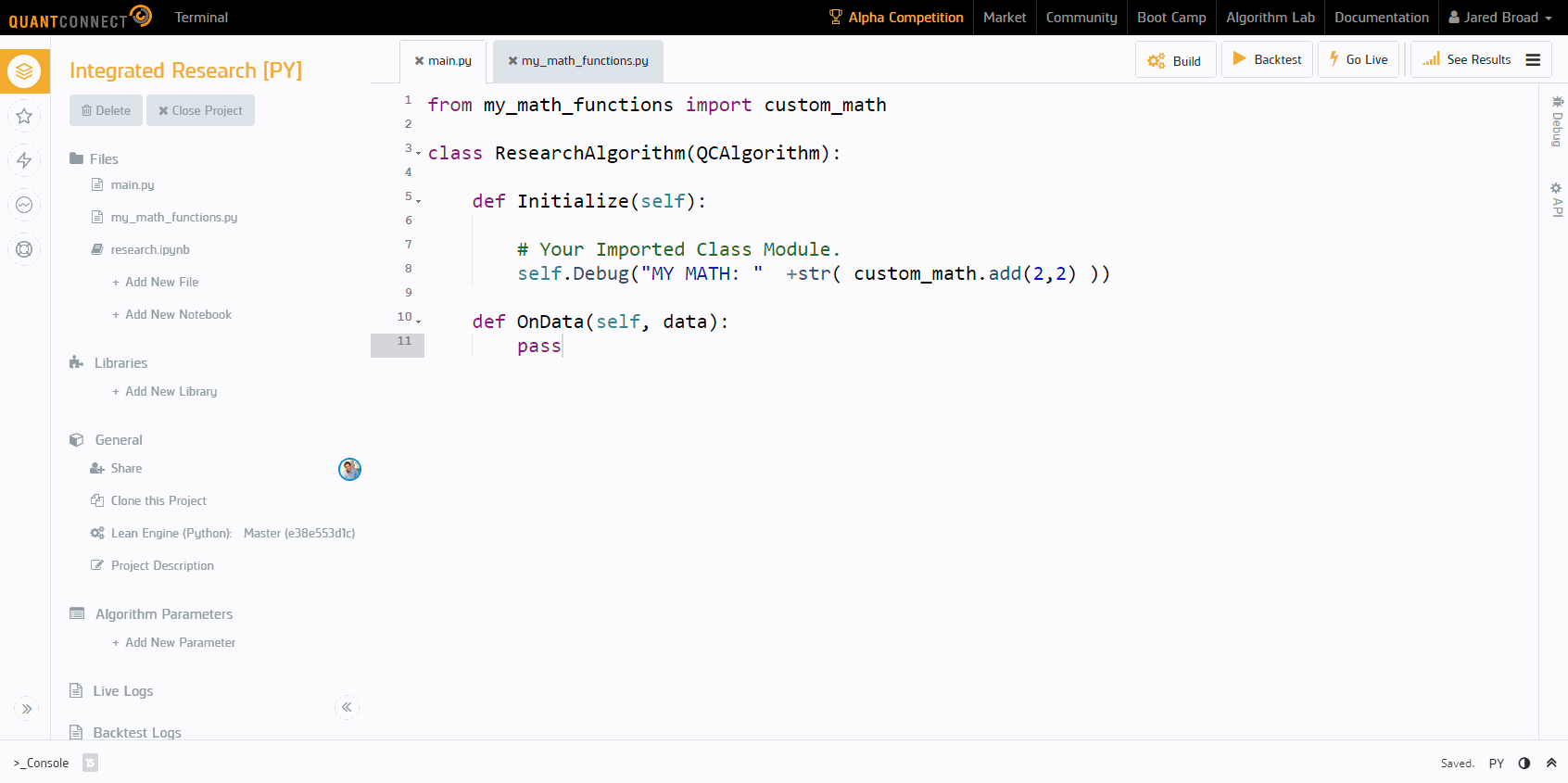
Research to Production is a series of blog post tutorials that use QuantConnect's deep integration with Jupyter Lab to give you a powerful new tool for your alpha research. With this series, you can see how to quickly take your ideas from the research notebook and implement them in an algorithm. You can use QuantConnect's research environment in Python and C#.
Read and Clone a Tutorial
The series covers implementations of statistical and machine learning concepts with code snippets and a template algorithm to clone. You can start with any topic:
- Mean Reversion: use the research notebook to calculate the spread between an asset's price and its historical mean from the past 30 days. Then, calculate the standard deviation and determine which assets have moved more than one standard deviation below their average price. Take advantage of the mean reversion theory and take long positions.
- Random Forest Regression: train a supervised learning random forest regression model to identify important features of our data. Use the model weights to build a tradeable portfolio.
- Uncorrelated Assets: build a portfolio that can be more diversified and resilient to extreme market events by looking for uncorrelated assets. The diverse portfolio becomes the foundation for building a robust algorithm when combined with other indicators and data sources.
- Kalman Filter and Pairs Trading: implement a Kalman filter strategy to predict pairs trading hedge ratios. The Kalman filter takes measurements over time and estimates unknown variables using a joint probability distribution of the variables for each timeframe. It can be used instead of a moving average indicator and could be a significant next step in your algorithm design.
- Stationary Processes and Z-Scores: implement two concepts that improve an Alpha's ability to forecast. Test for stationarity with the Augmented Dickey-Fuller (ADF) test and normalize the data based on z-scores.
- Principal Component Analysis: implement a strategy using Principal Component Analysis to identify the dimensions of data, or number of components, that contribute most to data variance. We can use PCA-transformed data to build regression models, reduce the number of factors in our model to avoid overfitting, and make predictions.
- Hidden Markov Models: use Hidden Markov Models to represent the market shift from bull to bear and to predict the market state. A Markov process is stochastic, where the possibility of switching to another state depends only on the model's current state.
- Long Short-Term Memory: apply neural networks with a "Long-Short-Term Memory" to a time-series prediction. With a long memory, LSTM models can better capture market outliers, such as recessions with less overfitting.
You can learn QuantConnect's API through their coding labs and with this free Udemy course.
















Sherry Yang
The material on this website is provided for informational purposes only and does not constitute an offer to sell, a solicitation to buy, or a recommendation or endorsement for any security or strategy, nor does it constitute an offer to provide investment advisory services by QuantConnect. In addition, the material offers no opinion with respect to the suitability of any security or specific investment. QuantConnect makes no guarantees as to the accuracy or completeness of the views expressed in the website. The views are subject to change, and may have become unreliable for various reasons, including changes in market conditions or economic circumstances. All investments involve risk, including loss of principal. You should consult with an investment professional before making any investment decisions.
To unlock posting to the community forums please complete at least 30% of Boot Camp.
You can continue your Boot Camp training progress from the terminal. We hope to see you in the community soon!